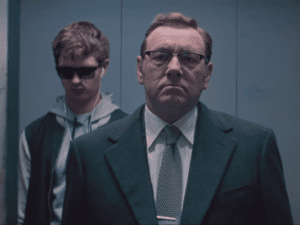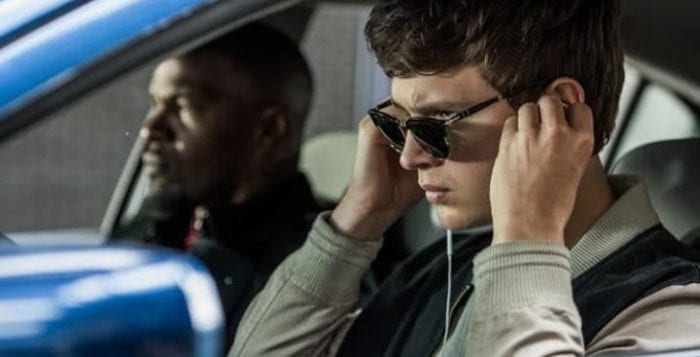By Kyle Barr
Think of all the songs that use the word “baby.” Think of every time it’s used in a love ballad, a rock song about a girl or close to every country song that comes out over the radio. Baby is mysterious. When we listen to those songs, we create the image for this “baby” in our heads, but we don’t really know much about who it really is.
In Edgar Wright’s “Baby Driver,” Baby isn’t the vague object of desire; he’s the main character. The eponymous Baby (Ansel Elgort) is a young man whose head is constantly swimming with music. He doesn’t talk much with his mouth, but he expresses himself in the way he moves and the way he drives.

The story takes cues from a host of classic crime movies. Baby is involved in a number of high-profile bank robberies. Things get more complicated as he falls in love with a waitress at the local diner named Deborah (Lily James) who loves music as much as Baby does. As Baby is drawn into one final heist alongside Darling (Eliza González), Buddy (Jon Hamm) and the psychotic Bats (Jamie Foxx), he must find a way to escape with Deborah and drive until its all left behind in the rearview mirror.
Wright, who serves as both director and screenwriter, has always had a knack for soundtracks that apply to both the tone and scene. One well-remembered scene from “Shaun of the Dead,” one of his earlier films, was of a group of heroes pummeling a zombie with pool cues to the ironic sounds of Queen’s “Don’t Stop Me Now.”
In “Baby Driver,” the entire movie takes on this schtick. Baby has tinnitus, an ear injury he received as a child, and he uses music to drown out the hum in his ears. All the music in the movie is diegetic, as in the music is listened to by the characters in the scene. When Baby removes a single earbud from his left ear, the music in the theater is coming from the right-hand speaker.

It’s a brilliant thing to watch when it takes in the whole theater experience of spectacle and sound. Music becomes Baby and it transforms the world around him. It’s hard to tell whether Baby is acting to the beat of the music or the world itself is conforming to the sound.
The action scenes, such as the first car chase playing to “Bellbottoms” by The Jon Spencer Blues Explosion, take on a new dimension when Baby turns and brakes in time to the song. Yet even the calmer scenes, like when Baby and Deborah bond in a laundromat over music, becoming much more charming even as Baby is incredibly sparing with his words.
It’s no coincidence that the most tense scenes in the movie usually occur when Baby’s earbuds are taken out and the music cuts. The movie is both classic in its heist movie sensibilities and also incredibly dark. Baby matches the audience in his fear and disgust at the death happening around him.
While the dialogue is clearly Wright, it is much more terse than his other films. Doc (Kevin Spacey) has some of the best lines in the film, where exchanges are often short and witty. “I’m looking at some of the country’s finest thugs and of course young Mozart in a go-cart over there.” But while his character is clearly meant to be powerful and frightening, his heel face turn during the movie’s climax comes too much out of left field. The entire climax in that way feels a little too forced, and without any spoilers, some character beats feel a little too forced as well.
But otherwise, “Baby Driver” is an excellent movie on its own, and it is a great way to start off the summer movie season. Don’t be surprised if you find yourself tapping your foot while Baby puts his foot on the gas.
Rated R for language and violence, “Baby Driver” is now playing in local theaters.





